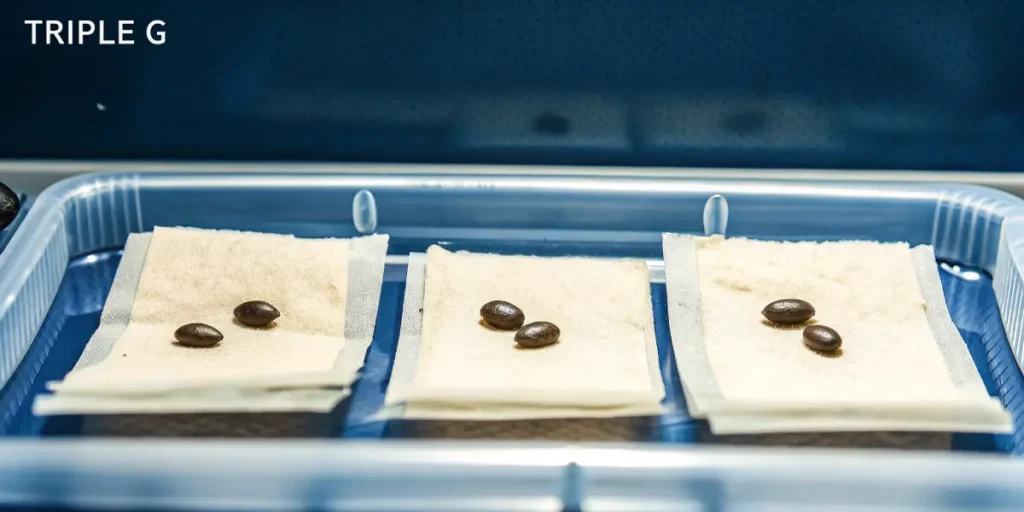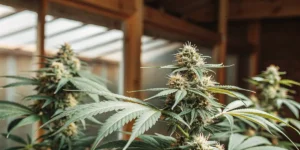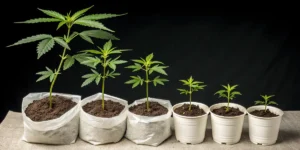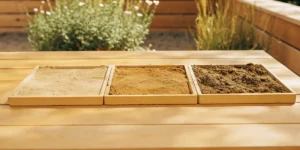Triple G, a potent hybrid strain derived from the parent strains Gorilla Glue #4 and Gelato, is popular for its powerful effects and rich flavor. Growing Triple G at home can be a rewarding experience, but it requires attention to detail and understanding of the plant’s specific needs. Whether you are a novice or an experienced grower, mastering Triple G cultivation calls for understanding its growth requirements, climate suitability, and nutrient needs.
Begin by selecting high-quality Triple G seeds from a reputable source. Germination is the first crucial step, and it should be done in a controlled environment to ensure the seeds sprout efficiently. You can use the paper towel method, which involves placing seeds between moist paper towels and storing them in a dark, warm place. Once the seeds sprout, they should be transferred to small planters with a suitable growing medium like soil mix or coco coir to allow the root system to develop.
Next, focus on the environmental setup to ensure optimal growth for your Triple G plants. This includes maintaining a temperature between 20-25°C (68-77°F) with humidity levels around 60% during the vegetative stage. Adequate lighting is crucial, and the plants should receive 18-24 hours of light per day from LED or HID grow lights. Adequate ventilation and airflow prevent mold and pest problems, which are crucial for healthy plant development.
When transitioning to the flowering stage, adjust the light cycle to 12 hours of light and 12 hours of darkness. This change mimics the natural environment and encourages flowering. During flowering, lower the humidity to 40-50% to reduce mold risks and support bud development. It is important to regularly feed the plants a balanced diet of nitrogen, phosphorus, and potassium, tapering off nitrogen in favor of phosphorus in the flowering stage to enhance bud production and potency.
As Triple G approaches maturity, monitor the trichomes using a magnifying glass or microscope. Harvesting is optimal when the trichomes are mostly cloudy with a few amber-colored ones, indicating peak potency. After harvest, the drying and curing process is crucial for developing the strain’s full flavor and effects. Hang the trimmed buds upside down in a dark, cool, and well-ventilated area for a few weeks. Follow this with curing in airtight jars, opening them periodically to release moisture for several weeks.
By following this guide, growing Triple G can be a fruitful project, yielding aromatic, high-quality buds. With proper care and dedication, you’ll enjoy the unique effects and rich flavors that make Triple G a favorite among cannabis enthusiasts. Remember, each growing experience is a learning opportunity, so keep experimenting and refining your techniques with each cycle.
Triple g Strain Overview: Traits, Effects & Genetics
The “triple g” strain, also known as “Triple Gorilla” or “Gorilla Glue #4,” is a potent and popular hybrid strain cherished by cannabis enthusiasts for its robust traits and distinct effects. Boasting a THC level often reaching upwards of 26%, this strain is not for the faint-hearted. It originated as a cross between three influential strains: GG1 (Afghani x Chocolate Diesel), GG2 (Sour Dubb), and GG4 (Chem’s Sister), which together create a powerhouse cannabis option known for its strong effects and therapeutic benefits.
Triple g is characterized by its dense, resin-coated buds, indicative of the robust resin production it inherits from its Gorilla Glue lineage. The trichome-laden buds often exhibit a rich, earthy aroma with nuanced notes of chocolate and coffee, making it not only a delight for the eyes but also therapeutically satisfying. The plant itself is relatively easy to grow, making it an appealing option for both novice and seasoned growers. Offering a rich palette of colors including deep forest green tinged with purple hues and fiery orange pistils, Triple g is as aesthetically appealing as it is potent.
The effects of the Triple g strain are profound and multifaceted. Users report an uplifting cerebral buzz, providing a powerful mood-enhancement that’s perfect for late afternoon or evening activities. Despite the initial surge of energy and mental stimulation, users quickly experience deep relaxation and often couch-lock, a signature of its indica-dominant profile. For medical users, this strain can potentially aid in alleviating symptoms of stress, depression, and chronic pain. Its high THC content, however, demands measured consumption to avoid overwhelming less-experienced users.
Genetically, Triple g boasts a remarkable blend that takes the best from its parent strains. Its lineage ensures not only an impactful high but also a distinctive set of flavors and growing traits. The cross-breeding results in a strain capable of producing a high yield, with plants that thrive both indoors and outdoors. As such, Triple g is an ideal choice for growers looking to cultivate a strain that’s both commercially viable and personally satisfying.
Optimal Environment to Grow Triple G Successfully
When it comes to cultivating Triple G, a cannabis strain lauded for its high THC content and delightful flavor profile, creating the perfect growth environment is essential. This strain, a potent cross of Gorilla Glue and Gelato, thrives under specific conditions that cater to its genetic makeup. Understanding the right environmental factors will help ensure robust growth and maximize yield. A carefully controlled climate, with the right balance of temperature, humidity, and light, can significantly increase the quality and quantity of your harvest.
Temperature plays a crucial role in the successful cultivation of Triple G. Ideally, daytime temperatures should be kept between 70°F and 85°F (21°C to 29°C). Growth can be stunted, and plant health can deteriorate if temperatures fall outside this range. During the flowering phase, it might be beneficial to lower the temperature slightly, as this can enhance the plant’s color and trichome production. Make sure to monitor nighttime temperatures, ensuring they do not drop more than 10-15 degrees below daytime levels to prevent stressing the plants.
Maintaining proper humidity levels is equally important. Seedlings and clones prefer high humidity levels of around 65-70%, whereas during the vegetative phase, 40-60% is recommended. As plants transition into the flowering stage, gradually reducing humidity to 30-40% helps to prevent mold and mildew, which can be highly detrimental to buds. Using dehumidifiers or humidifiers can assist in managing humidity levels when growing indoors.
Light is a crucial factor in determining the success of your cannabis growth, and Triple G is no exception. During the vegetative stage, the plants require around 18 hours of light to 6 hours of darkness, which can be achieved using high-quality LED grow lights or other effective lighting systems. Transitioning to a 12-hour light and 12-hour darkness cycle during the flowering stage simulates the natural progression of seasons and encourages robust flower development. Ensuring even light distribution across the canopy is vital to promote even growth and bud formation.
Grow Room Setup for triple g Plants
When cultivating triple g plants, designing an effective grow room is crucial to maximizing yields and ensuring robust plant health. First and foremost, location is key. Choose a dedicated space that can be easily controlled for temperature, humidity, and light. Ideally, this room should be insulated to prevent external temperature fluctuations, which could stress the plants. Consider using a reflective material, such as Mylar or white paint, on the walls to maximize light dispersion throughout the grow space.
Lighting is paramount for triple g plants due to their relatively high light requirements. Utilizing full-spectrum LED lights is a popular choice among growers because they provide the necessary spectrum for all growth stages while being energy-efficient. Ensure that lights are positioned appropriately, often between 12 to 24 inches above the canopy, and adjust as the plants grow. It is advisable to set a light schedule that mimics natural conditions, typically 18 hours on and 6 hours off during the vegetative stage and 12 hours on and 12 hours off during flowering.
Temperature and humidity control are essential for cultivating healthy triple g plants. Maintain a steady temperature range between 68-78°F (20-25°C) during the day, and slightly cooler at night. Consistency in temperature helps optimize metabolic and photosynthetic rates. Relative humidity levels should start at around 60-70% during the vegetative stage and gradually decrease to 40-50% as the plants progress to the flowering stage. Humidity control can be managed with the help of humidifiers, dehumidifiers, or AC units.
A proper ventilation system is critical in any grow room to prevent mold, mildew, and pest infestations, common issues that can affect triple g plants. Incorporate both intake and exhaust fans to facilitate air circulation. Utilize carbon filters to eliminate odors, ensuring discretion. Good air circulation, achieved with oscillating fans, helps strengthen stems and promotes an even environment, reducing the likelihood of hotspots or stagnant air pockets.
Indoor Growing Tips for triple g
Growing Triple G indoors offers the unique advantage of controlling the environment to maximize this strain’s robust qualities. Triple G is a potent and flavorful hybrid that thrives with attention to detail in an indoor setting. Start by ensuring your grow space maintains a stable temperature, ideally between 70-80°F (21-26°C) during the day and slightly cooler at night. This consistency helps preserve the plant’s potency and enhances its growth rate. Good ventilation is equally crucial to prevent mold and pests while ensuring your plants have access to fresh air.
Lighting is another significant factor, with Triple G responding well to high-intensity light sources. Consider using LED grow lights, as they provide a full spectrum that closely mimics natural sunlight while being energy-efficient. Position your lights approximately 12-24 inches above the canopy to maximize light penetration and reduce the risk of light burn. Adjust the light schedule to provide around 18 hours of light and 6 hours of darkness during the vegetative stage, transitioning to a 12/12 schedule when you want to induce flowering.
Proper nutrition is essential for Triple G’s development. Use a quality nutrient mix tailored for cannabis growth stages, providing higher nitrogen levels during the vegetative phase and increasing phosphorus and potassium during flowering. It is equally vital to monitor and adjust the pH of your growing medium. For soil, aim for a pH range between 6.0-7.0, and for hydroponic systems, keep it slightly lower, around 5.5-6.5. These adjustments will enable your plants to absorb nutrients more efficiently.
Lastly, consider implementing a training technique, such as Low-Stress Training (LST), to maximize yields by encouraging horizontal growth, allowing more light to penetrate the lower branches. Regularly inspect your plants for signs of stress, nutrient deficiencies, or pest issues. Addressing problems promptly will keep your Triple G plants healthy and vigorous, optimizing the quality and quantity of your final harvest.
Outdoor Growing Tips for triple g
Triple G, also known as Gorilla Glue Gelato, is renowned for its potent THC levels and rich aromatic profile. This strain thrives in outdoor growing environments due to its robust nature and ability to adapt to varying weather conditions. To maximize the yield and potency of Triple G, it is essential to consider several crucial factors that cater to its unique growing needs. Whether you’re a beginner or a seasoned grower, these tips will help optimize the growth of this remarkable strain in an outdoor setting.
First and foremost, selecting the appropriate location is critical for growing Triple G outdoors. This strain requires plenty of direct sunlight, so choose a spot that receives a minimum of six hours of sun daily. The chosen area should also provide adequate protection from harsh winds, which can damage the plants or stunt their growth. Ensuring that the site has good drainage is another crucial factor, as Triple G does not thrive in waterlogged or overly damp soil conditions. Moderate humidity and temperature between 70-85°F are ideal during the vegetative and flowering phases.
Nutrient management plays a significant role in the successful cultivation of Triple G outdoors. During the vegetative stage, it is essential to provide a balanced nutrient solution with a slightly higher nitrogen content to promote vigorous growth. As the plants transition to the flowering stage, switch to a phosphorus and potassium-rich fertilizer to support bud development. Regularly monitoring the pH level of the soil and ensuring it stays between 6.0 and 6.5 will also help maintain optimal nutrient absorption and overall plant health.
Pruning and training techniques can enhance the yield and quality of Triple G plants. Regularly trimming lower branches and leaves will improve air circulation and light penetration through the canopy, reducing the risk of mold and mildew. Techniques such as topping and low stress training (LST) can also be employed to encourage a bushier plant structure and more even distribution of buds. Additionally, keeping an eye out for pests and diseases is vital. Weekly inspections and the use of organic insecticides or fungicides can help keep unwanted invaders at bay, ensuring the health and productivity of your crop.
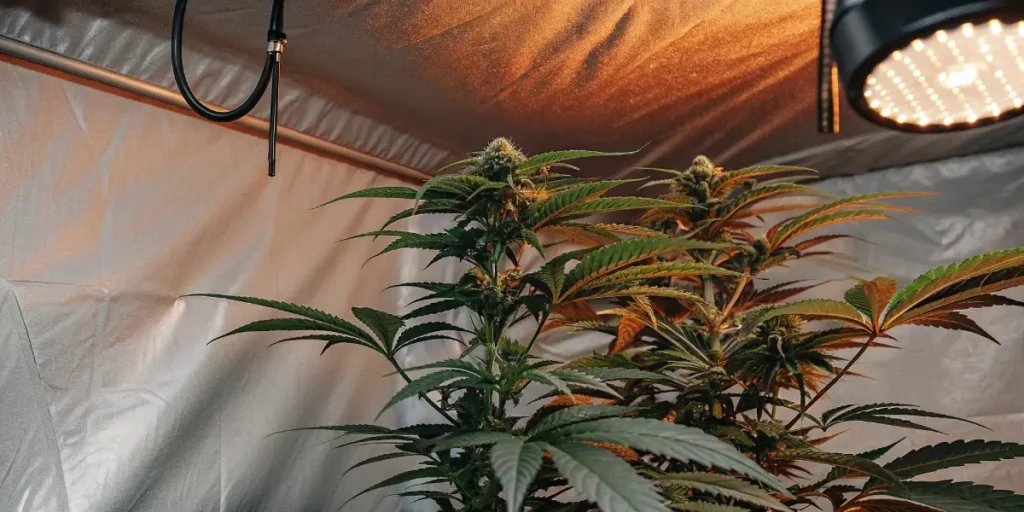
How to Germinate & Propagate Triple G
When embarking on the journey to grow Triple G, a potent and aromatic cannabis strain known for its unique effects and terpene profile, effective germination and propagation are crucial first steps. The process begins with selecting viable seeds, which should be dark brown in color and have a hard shell. Avoid seeds that are immature or green, as these are less likely to germinate successfully. Ensuring seeds are of high quality can make a significant difference in the growth and yield of your plants.
The paper towel method is a popular technique for germinating Triple G seeds. Start by soaking your seeds in water for about 12 to 24 hours; this helps to kickstart the germination process by activating the seed’s natural metabolism. Once soaked, place the seeds between two damp paper towels on a plate, and cover them with another plate to create a dark, humid environment. Keep the setup in a warm area, ideally between 70-85°F (21-29°C). Check the seeds daily to ensure the paper towels remain moist but not soaking wet, to prevent mold growth and seed damage.
As soon as the seeds develop a small taproot, usually within 24 to 72 hours, they are ready to be transferred to a growth medium. Carefully plant each germinated seed in a small pot filled with quality soil or a peat pellet, ensuring the taproot is facing downwards about half an inch deep. Keep the soil consistently moist but not waterlogged, and maintain a warm environment to encourage healthy root development. Providing ample light at this stage is also essential, so consider using a grow light to support the seedlings as they emerge.
Propagation of Triple G through cloning is another method to consider, especially for maintaining the genetic consistency of a particularly desirable plant. Select a healthy mother plant, ideally in the vegetative stage, and use sterilized tools to cut a 4-6 inch branch from a vigorous growth area. Dip the cut end into a rooting hormone and place it into a rock wool cube or into soil specifically designed to encourage root growth. Ensure the clones receive high humidity and indirect light initially, gradually adjusting them to direct light and normal growth conditions as they develop roots.
Both germination and propagation of Triple G require close attention to environmental conditions and plant health. By dedicating care and precision in these early stages, growers can maximize their chances of cultivating strong, high-yielding Triple G plants that showcase this strain’s distinctive qualities.
Vegetative Stage: Nurturing Your triple g Plants
The vegetative stage is a crucial period in the lifecycle of your Triple G (Gorilla Glue #4 x Gelato #33) cannabis plants. During this phase, which typically lasts between four to six weeks, your plants focus on developing a robust structure and expanding their canopy. Providing your Triple G plants with the right environment, nutrients, and care will ensure they reach their full potential in later stages. Successful nurturing during the vegetative stage sets the foundation for a high-quality yield.
Lighting plays a pivotal role during this growth stage. Triple G plants thrive with ample light, requiring about 18-24 hours of light daily to promote photosynthesis and vigorous growth. Maintaining a consistent light schedule is important to prevent stress that can stunt development. Utilizing high-quality LED grow lights or high-intensity discharge (HID) lamps can provide the necessary light intensity, ensuring the plants’ energy needs are met. Keeping the lights at an appropriate distance will help avoid light burn while maximizing growth.
Providing your plants with adequate nutrients is essential for healthy development. During this stage, Triple G plants particularly require higher levels of nitrogen, which is crucial for the production of chlorophyll and growth of lush, green foliage. Choosing a quality vegetative stage nutrient mix that includes macro and micronutrients will encourage strong, vibrant growth. Regularly monitoring pH levels in your soil or hydroponic setup will ensure optimal nutrient uptake, fostering each plant’s potential.
Environmental factors such as temperature and humidity levels also need to be carefully managed. Maintaining a temperature range of 70-85°F (21-29°C) and humidity between 40-70% will create a conducive climate for vegetative growth. Air circulation is equally important; introducing oscillating fans will promote strong stems and prevent mold and pests. Paying attention to these environmental parameters will create a healthy and vigorous environment, ready to transition into the flowering stage.
Pruning and training are also beneficial techniques during the vegetative stage to shape your plants for maximum yield. Techniques like topping and low-stress training (LST) can create a more even canopy and improve light penetration to lower branches. Regularly inspecting and removing any yellowing leaves or underdeveloped growth allows your Triple G plants to direct energy towards more productive areas, ultimately leading to a more bountiful harvest.
Flowering Triple G: What to Expect
When cultivating Triple G, a strain renowned for its potency and sweet, fruity aromas, the flowering stage brings a particularly exciting phase of growth. This phase typically begins around eight to nine weeks into the plant’s life cycle, and growers should expect to see a noticeable transformation as the plants start to produce buds. The plant’s genetic lineage, combining powerhouses like Gorilla Glue and Gelato, ensures a robust flowering period. During this stage, you will observe a significant build-up of thick, resinous trichomes covering the buds.
A distinct characteristic of Triple G during flowering is its vibrant coloration. Growers can anticipate a mesmerizing display of deep green foliage complemented by purple hues that emerge depending on environmental conditions. As the flowering continues, maintaining optimal conditions becomes crucial to unlocking the plant’s full potential. Adequate lighting, controlled humidity, and stable temperatures are vital. Lowering humidity levels to around 40-50% helps prevent mold and mildew, which could otherwise compromise your harvest.
The aroma of Triple G intensifies during the flowering stage, filling the grow space with a complex bouquet of sweet, berry, and earthy scents. This olfactory development signifies that the terpene profile is maturing, which will contribute to the flavor and effects of the final product. Regular monitoring and care during this period ensure the plants develop rich cannabinoid content, making the strain’s high potency well-known to both medicinal and recreational users.
As the flowering period progresses, growers should start monitoring the trichomes’ color to determine the ideal harvest time. A blend of milky and amber hues in the trichomes indicates peak potency and flavor. Patience is key; harvesting too early can affect potency and yield, while too late can cause degradation of cannabinoids. When done right, harvesting at the optimal time will ensure that your efforts result in a high-quality, aromatic, and potent batch of Triple G buds.
Feeding triple g: Fertilizers & Nutrient Schedule
Triple G, a potent and well-loved cannabis strain, demands a keen understanding of its nutritional needs to maximize its growth potential and yield. Providing Triple G with the right balance of nutrients at particular stages of its development is crucial. A solid foundational nutrient regimen begins with a high-quality base fertilizer suitable for cannabis growth. During the early vegetative phase, a nitrogen-rich feed is ideal, launched slowly and carefully to prevent nutrient burn. It ensures that the plant creates strong stems and robust foliage, setting the stage for a successful grow cycle.
As the plant transitions into the late vegetative phase, the nutrient balance may shift slightly to include more potassium and phosphorous alongside nitrogen. This balanced combination supports the plant as it gears up for the flowering stage, promoting stronger root development and better overall plant health. Depending on the cultivar and growing medium, growers might incorporate micronutrients like magnesium and sulfur during this stage. These support chlorophyll production and photosynthesis efficiency, ensuring vigorous foliage growth and enhancing the plant’s ability to utilize the available light.
When Triple G enters the flowering phase, the nutrient demands pivot dramatically. This stage focuses on boosting phosphorous and potassium while reducing nitrogen levels. Potassium plays an essential role in sugar production; thus, enhancing flavor and bud development. The phosphorus helps in building robust buds and improving bloom density. A blooming fertilizer high in these nutrients is recommended, alongside occasional supplements of calcium and magnesium to prevent deficiencies that could affect the final yield. Monitoring pH levels is also critical, as nutrient uptake is dependent on the optimal pH range, usually between 6.0 and 7.0 in soil and slightly lower for hydroponics.
Employing an effective nutrient schedule entails regular monitoring to assess plant response to fertilizers, adjusting concentrations as needed to avoid nutrient lockout or burn. Flushing the soil with pure water occasionally, particularly during the last week before harvest, helps clear accumulated salts and excess fertilizers, ultimately leading to a cleaner and smoother final product. Every step of the nutritional journey contributes significantly to Triple G’s vigorous growth, potency, and aromatic profile. Strategically feeding Triple G with precision can make a remarkable difference in achieving a premium quality harvest.
Pest and Disease Prevention for Healthy Cannabis Plants
When cultivating cannabis plants, prevention is key to managing pests and diseases. The integrity of your crop hinges on proactive measures that minimize potential threats. Keeping your growing environment clean is essential. Regularly sanitize all tools to prevent the transmission of pathogens. Maintaining a clutter-free grow space will also discourage pest infestations. By ensuring cleanliness and order, you create a hostile environment for pests and reduce the chances of disease outbreaks.
Monitoring your plants daily is crucial for early detection of any signs of distress. Utilize magnifying tools to inspect the undersides of leaves for pests such as spider mites or aphids, which are often not visible to the naked eye. Early detection means that interventions can be implemented before infestations become severe. Additionally, keep an eye out for signs of nutrient deficiency or over-watering, as unhealthy plants are more susceptible to pests and diseases.
Implementing biological control methods can effectively manage pest populations without harming the environment. Introduce beneficial insects, like ladybugs or predatory mites, into your grow space to naturally control and reduce harmful pests. Additionally, planting companion plants can deter pests; for instance, marigolds release natural compounds that repel certain insects. These natural approaches support a balanced ecosystem and improve the resilience of your cannabis plants.
Environmental control is another significant factor in disease prevention. Maintain optimal humidity and temperature levels, as excess moisture can promote the growth of mold and mildew. Proper ventilation is essential to ensure consistent air circulation, which helps reduce the buildup of humidity and the risk of fungal diseases. Investing in a reliable hygrometer and thermostat will enable you to monitor and adjust conditions as needed, safeguarding your plants’ health.
Finally, utilizing disease-resistant strains can offer an added layer of protection. Some cannabis strains are bred for increased resilience against specific pathogens. When planning your cultivation, select strains that match the specific challenges of your growing environment. By combining resistant varieties with good cultural practices, you significantly minimize the risk of pests and diseases affecting your cannabis crop.
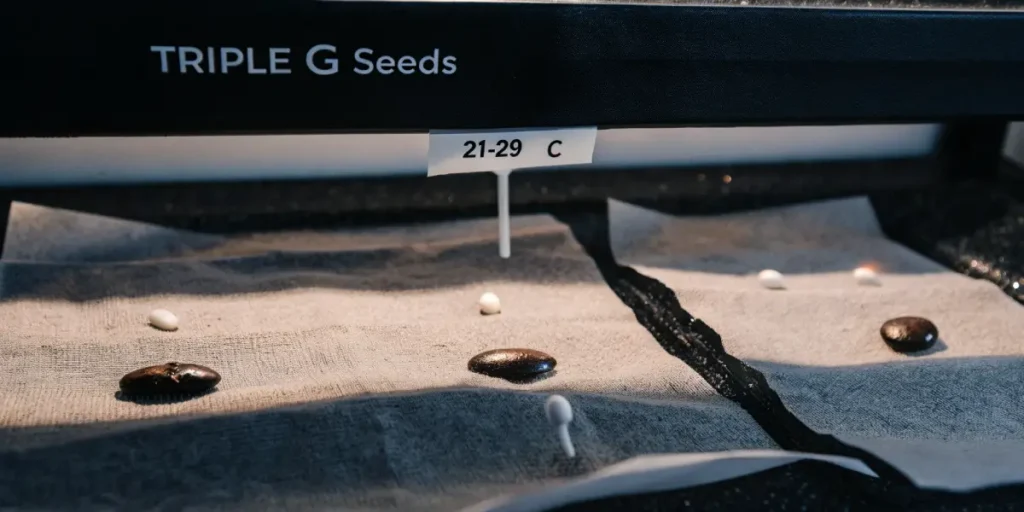
Harvesting & Drying triple g the Right Way
Harvesting Triple G, a potent and flavorful cannabis strain, requires precision and attention to detail. To ensure the highest quality buds, it’s important to recognize the optimal time for harvest. Look for indications that your plants are ready, typically when the trichomes turn a cloudy white with some shifting to amber. This is the sweet spot when the THC levels are at their peak, delivering the strongest effects. Additionally, the pistils on your Triple G should mostly be curling and have shifted to a darker hue, confirming maturity.
Once you have identified the perfect time to harvest, carefully trim the larger fan leaves from each plant as these do not contain cannabinoids. It’s crucial to use clean, sharp scissors or a pruner to avoid any damage to the precious buds. Handle each plant gently to minimize the loss of trichomes, which can easily detach during rough handling. Moving forward, ensure your harvested Triple G is transported in conditions that avoid excessive heat or direct light, as these can degrade the plant’s quality and potency.
Drying your Triple G properly is essential to preserve its aroma, flavor, and effects. Begin by hanging branches in a dark room with a consistent temperature of around 60-70°F and humidity levels between 45-55%. This environment helps avoid mold or mildew growth, whilst allowing the plant to dry slowly. Rapid drying can diminish the taste and potency, so patience is key. Typically, the drying process takes about 7-14 days. Testing for dryness involves bending a branch; if it snaps rather than bends, it’s an indicator that the drying process is complete.
Afterwards, curing becomes the next vital step in maximizing the quality of your Triple G strain. Place the dried buds into airtight glass jars, filling them loosely to allow air circulation. Store these jars in a cool, dark place, opening them once a day for the first week to release moisture and replenish fresh air – a process known as burping. As the curing progresses, you can reduce the frequency of burping to every few days. Ideally, your Triple G should cure for a minimum of two to three weeks, though a longer duration can significantly enhance its smoothness and flavor profile.
Following these detailed steps ensures your Triple G harvest maintains its powerhouse qualities of potent effects and rich flavor. By harvesting at the right time, and drying and curing correctly, you enhance not just the quality of your cannabis, but also its overall sensory experience. Caring for your plants during these critical stages can make all the difference in your final product, yielding a premium batch ready to be enjoyed.
Triple g Strain Type: Indica, Sativa or Hybrid?
When it comes to understanding the intricacies of cannabis strains, “triple g” stands out as an intriguing option for both novice and seasoned growers. Known for its unique genetics, triple g is classified as a hybrid strain, which means it combines elements from both the Indica and Sativa families. This blend allows users to enjoy a versatile experience, harnessing the best properties from each lineage. The hybrid nature of triple g means it can offer balanced effects that cater to a wide range of preferences whether you’re looking to relax or maintain focus.
The origins of the triple g strain are rooted in a fascinating lineage. It’s a cross between two powerhouse strains: Gorilla Glue and Gelato. Gorilla Glue is renowned for its potent Indica effects, delivering a heavy-handed relaxation and euphoric high, while Gelato is prized for its Sativa-like uplifting and creative boost. This combination gives triple g its hybrid status, perfectly balancing the soothing body high of an Indica with the energizing cerebral high of a Sativa. As a result, it caters excellently to recreational users who seek a multifaceted experience and medical users who need a strain that can potentially address both physical and mental ailments.
In cultivating triple g, growers will notice its hybrid characteristics manifesting in its growth patterns. Typically, hybrids strains like triple g will exhibit moderate-height plants with bushy structures that require adequate space and pruning to ensure optimal light exposure and growth. These plants can adapt to various growing conditions but tend to thrive best in carefully controlled indoor environments. The balanced genetics of triple g lend themselves to yields that satisfy growers who are looking for productiveness without sacrificing quality. While it may pose certain challenges typical of hybrids, such as a nuanced nutrient profile, with the right care and attention, triple g can yield copious amounts of resinous buds that exemplify both its Indica and Sativa roots.
Why Grow Triple G? Key Benefits for Cultivators
Triple G, a robust cannabis strain, is a hybrid breed derived from the illustrious lineage of Gorilla Glue and Gelato. Its high THC content and appealing terpene profile make it a favorite choice among cultivators. Not only does it promise powerful and flavorful buds, but it also ensures bountiful yields if grown under optimal conditions. For those seeking a rewarding cultivation experience, Triple G stands out as an excellent option.
One of the primary benefits of cultivating Triple G is its high resilience and resistance to common plant diseases and pests. Its sturdy genetic makeup makes it an ideal strain for both novice and experienced growers. With its vigorous growth patterns, Triple G can withstand varying environmental conditions, providing an added layer of assurance for cultivators who may face unpredictable weather or indoor environments.
Triple G also offers a relatively short flowering period, typically ranging from 8 to 10 weeks. This quick turnaround allows cultivators to harvest more frequently, achieving multiple cycles of cultivation per year. The strain’s ability to produce dense, resin-rich buds in a short amount of time is highly efficient and economical, ensuring maximum productivity with minimal waiting periods.
Moreover, the high THC content of Triple G makes it sought after in the market. Growers can expect potential THC levels reaching up to 26%, making it highly attractive for consumers seeking potent effects. This translates to great market value and demand, presenting significant monetary benefits for growers aiming to achieve premium quality and high profit margins.
Besides to its potency, Triple G boasts a delightful flavor profile, combining sweet and fruity notes with earthy undertones. This aromatic complexity enhances the overall consumer experience, ensuring repeat purchases and building a loyal customer base. Cultivators who focus on quality and flavor will find Triple G to be a reliable and rewarding choice.
Potential Challenges When Growing Triple G
Growing Triple G, a popular cannabis strain known for its potent effects and unique flavor profile, can present several challenges for cultivators. One of the primary difficulties is the strain’s sensitivity to environmental changes. Triple G, like many other cannabis strains, requires a carefully controlled environment with specific levels of temperature, humidity, and light. Deviation from these optimal conditions can lead to stunted growth, lower yields, or even a complete crop loss. Therefore, growers must invest in reliable climate-control equipment and remain vigilant in their monitoring practices to ensure the plants thrive.
Another significant challenge is managing the plant’s nutrient needs. Triple G tends to demand a specific nutrient balance, and an improper feeding schedule can result in nutrient burn or deficiencies. Over-fertilizing can lead to burnt leaf tips and dark, curled foliage, while underfeeding may cause yellowing leaves and slowed growth. To mitigate these issues, growers should familiarize themselves with the plant’s specific nutritional requirements and follow a well-researched feeding regimen. Using organic nutrients may also help in maintaining a balanced and steady nutrient intake for the plants.
Pest and mold resistance can also pose a challenge when cultivating Triple G. This strain requires a vigilant approach to both pest control and mold prevention. Factors such as dense foliage and high humidity levels can create an environment conducive to mold and pest infestations. Cultivators must proactively implement integrated pest management strategies and maintain adequate airflow and humidity levels in their growing space. Regular inspections are also crucial, as early detection of pests or mold can prevent significant damage. Employing natural, organic pest control methods can further safeguard the health of the plants without introducing harmful chemicals.
Finally, achieving maximum yield with Triple G demands a good understanding of pruning and training techniques. This strain can benefit from methods such as topping and LST (low-stress training) to increase light exposure and air circulation to all parts of the plant. However, improper pruning or training can stress the plant and reduce its potential yield. Therefore, cultivators should carefully research and deploy these techniques to optimize their plant’s growth without causing unnecessary stress or damage.
Is Triple G Worth Buying? Here’s What You Need to Know
Triple G, a cannabis strain that has gained popularity for its potent effects and tantalizing aroma, is making waves in the cannabis community. But is it worth your investment as a grower or consumer? Triple G, often referred to as Gorilla Glue Gelato, is a hybrid strain that combines genetics from Gorilla Glue and Gelato. It boasts a unique profile that offers both recreational and medicinal benefits, making it a versatile choice for a wide range of users. However, prospective buyers should consider several factors when deciding whether to invest in this strain.
One of the primary reasons for Triple G’s popularity is its high THC content, typically ranging from 20% to 25%. This makes it a powerful choice for those seeking potent psychoactive effects. Users often report a euphoric sensation accompanied by a deep relaxation, making it an ideal strain for unwinding after a long day. It also offers a sweet and fruity aroma with hints of chocolate, which adds to its appeal. However, its high THC levels may not be suitable for novice users or those who are sensitive to strong strains, as it can lead to overwhelming effects for inexperienced users.
From a cultivation standpoint, Triple G is somewhat demanding, especially for novice growers. It requires a controlled environment with precise temperature and humidity levels to thrive. However, the reward for successful cultivation is substantial, as it typically produces high yields of quality buds. Growers should be prepared to invest in quality equipment and spend time maintaining their plants to ensure optimal growth. Despite its challenges, the high demand for Triple G can make it a lucrative option for those willing to put in the effort.
Overall, whether Triple G is worth buying depends largely on your personal preferences, experience level, and goals. If you appreciate potent strains and are willing to invest the time and resources required for its growth, it can be a highly rewarding choice. However, if you are a beginner or prefer milder strains, you might want to consider alternatives before committing to this powerhouse. Ultimately, Triple G’s unique characteristics and potent effects make it a highly sought-after strain for both recreational and medicinal users, promising a rich experience for those ready to take on the challenge of cultivating it.
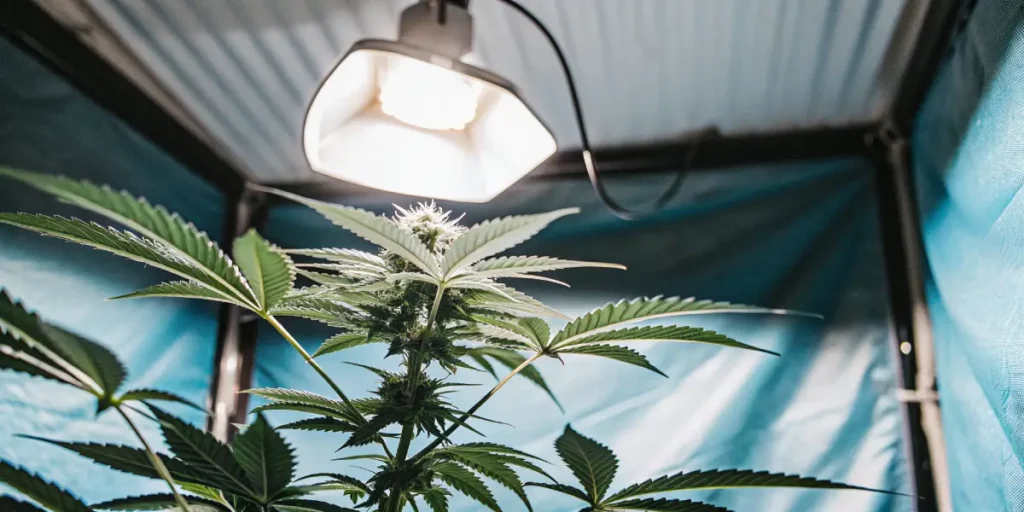
FAQs about Triple G
How long does the Triple G strain take to grow from seed to harvest?
Triple G typically takes 8 to 10 weeks of flowering, with a full life cycle of around 10 to 12 weeks from seed to harvest in optimal indoor conditions. Its Gorilla Glue and Gelato genetics ensure dense, resin-rich buds and high yields. Indoor growers benefit from controlled humidity and powerful LED lighting, while outdoor cultivators should aim for warm climates to achieve peak potency and flavor.
What are the main effects of Triple G strain?
Triple G delivers a potent hybrid high that begins with an uplifting cerebral rush followed by deep body relaxation. Its THC levels can exceed 25%, producing euphoria and stress relief without immediate sedation. Users often describe enhanced mood and creativity that transitions into calmness—ideal for evening use or unwinding after intense activity.
What makes Triple G strain unique for growers?
Growers value Triple G for its vigorous growth, high resin output, and short flowering time. The plants exhibit strong lateral branching and thick trichome coverage, making them ideal for resin extraction. With proper feeding—high nitrogen early, then phosphorus and potassium during bloom—growers can achieve commercial-grade yields and exceptional bud density.
What does Triple G strain taste and smell like?
Triple G features a complex terpene profile dominated by caryophyllene, limonene, and myrcene, creating rich notes of chocolate, earth, and sweet fruit. Its aroma intensifies during flowering, blending Gelato’s dessert-like sweetness with Gorilla Glue’s pungent earthiness. The smoke is smooth, leaving a lingering aftertaste of coffee and berries.
Is Triple G strain suitable for beginners to grow?
While manageable, Triple G is better suited for intermediate growers due to its nutrient sensitivity and need for stable environmental control. It rewards attention with high yields and premium potency. Novices can succeed by maintaining consistent airflow, moderate humidity, and balanced feeding schedules to avoid nutrient burn or mold issues.

